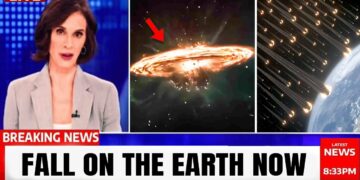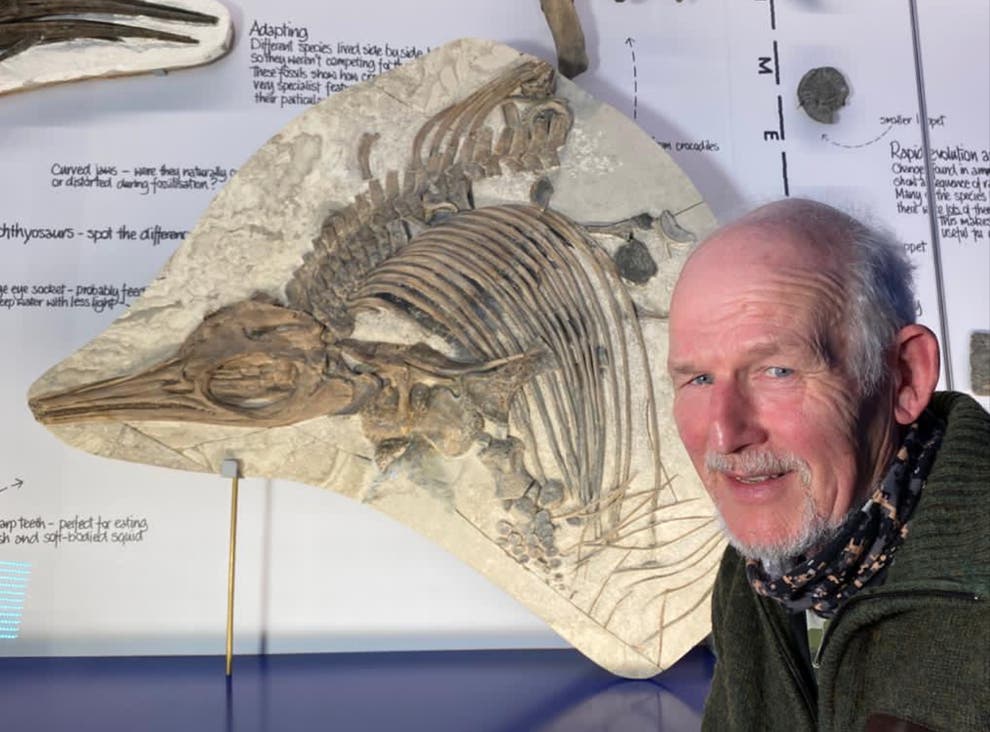A mysterious object, initially thought to be a comet, has captured the attention of leading scientists, with some suggesting it could be alien technology. Harvard professor and theoretical physicist Aby Lobe notes that the object follows an unusual path, moving too fast to be bound by the sun’s gravity and deviating from typical orbital patterns. While it poses no immediate threat, Professor Lobe emphasizes the need for further data to understand its nature and potential future risks. Joining us is Professor Lobe, author of Extraterrestrial: The First Sign of Intelligent Life Beyond Earth, to discuss why this object’s speed, trajectory, and behavior suggest it might not be a typical comet. “It’s unusually bright for its distance, implying a solid object would need to be 20 km in diameter—twice the size of the asteroid that caused the dinosaur extinction 66 million years ago,” Lobe explains. “Previous interstellar objects were much smaller, only hundreds of meters. There’s simply not enough rocky material in interstellar space to produce a 20 km object this frequently. Additionally, its trajectory is aligned with Earth’s orbit around the sun, an alignment with a 1 in 500 chance of occurring naturally.”
Remarkable photographs submitted to the Mutual UFO Network have sparked fascination and debate. Taken near the Orion Nebula, the images show a large, cylindrical object moving through space. The photographer captured three frames: two with the object centered and a third showing it exiting the frame. Slight shifts in the background stars reveal parallax, confirming the object’s movement and ruling out optical illusions or camera errors. The Orion Nebula, a stellar nursery and a culturally significant region, has long been associated with reports of unexplained objects. These new images continue that trend, raising questions about what might be occurring in this part of space.
The object’s elongated, cylindrical shape with straight edges and symmetry suggests intentional design, unlike the irregular forms of asteroids or comets. Its consistent structure across the three frames, combined with its rapid movement, supports the idea of a genuine object traversing space. Given its size relative to surrounding stars, the cylinder is enormous—far larger than human-made satellites, spacecraft, or the International Space Station. This scale suggests that, if artificial, it could belong to a civilization with advanced technology capable of constructing massive, stable structures for interstellar travel.
The Orion Nebula’s significance as a star-forming region adds intrigue. Some speculate that such areas might attract extraterrestrial observers studying cosmic processes or using them as waypoints for interstellar travel. The consistent reports of unexplained objects in this region strengthen these theories. The photographs’ authenticity is supported by the shifting positions of background stars, proving they are sequential images, not duplicates or artifacts like lens flares.
These images align with heightened interest in interstellar objects, following discoveries like ‘Oumuamua. Scientists and amateurs alike are increasingly open to the idea that such objects may be more common than previously thought. The cylindrical object’s size, symmetry, and speed suggest technology beyond human capabilities, capable of withstanding the harsh conditions of interstellar space. Speculation ranges from it being a probe, a craft, or a structure designed for observation or energy collection. Reactions vary, with some seeing the images as proof of extraterrestrial intelligence, while others remain skeptical but intrigued. The images, now part of the Mutual UFO Network’s records, contribute to ongoing discussions about unexplained phenomena.
Humanity’s fascination with the cosmos spans centuries, fueled by advancements in technology and space exploration. NASA, a leader in this field, has driven numerous discoveries. However, speculation surrounds a rumored classified Apollo mission. While NASA claims later Apollo missions were canceled due to budget constraints, some amateur researchers argue that covert lunar missions occurred to investigate unidentified spacecraft. Official statements deny these claims, attributing them to speculation, but reports of astronauts encountering unexplained objects during Apollo missions persist. Many astronauts, when questioned later, attributed these sightings to natural phenomena, leading some to suspect they were instructed to withhold details.
The moon’s far side, perpetually hidden from Earth, has also sparked intrigue. Theories suggest human or extraterrestrial outposts may exist there, chosen for their concealment. Some claim these missions uncovered ancient structures or crafts, though such ideas remain unproven. A former official from a covert government program recently claimed that extraterrestrial life is plausible, revealing significant funding for studying unconventional technologies tied to unidentified aerial phenomena (UAP). These claims, alongside decades of sightings, fuel public interest.
Astronauts like Edgar Mitchell, Katie Coleman, Brian O’Leary, and Buzz Aldrin have reported UFO sightings, with Aldrin describing an object trailing Apollo 11, later confirmed not to be part of their rocket. Dr. Brian O’Leary has suggested humanity has long been in contact with advanced civilizations using consciousness-based technologies, challenging conventional understanding. The International Space Station (ISS), orbiting at 400 km, is another hotspot for UAP sightings. These could reflect extraterrestrial curiosity about human space activities, resource exploration, or accidental encounters. Advanced cloaking technology might explain why such sightings are rare.
SpaceX’s Starship, a fully reusable rocket system, represents a leap in space travel. Its recent successful launch from Starbase, Texas, marked a milestone with perfect stage separation. However, social media reports noted an unidentified triangular object near the rocket, echoing previous sightings during SpaceX launches. Triangle-shaped UAPs, known as “black triangles,” are often described as large, silent, and capable of physics-defying maneuvers. These objects, reported globally by civilians, pilots, and military personnel, have also been seen near the ISS, adding to the mystery.
These phenomena, from the Orion cylinder to Starship sightings, fit into a broader pattern of unexplained observations. Each report strengthens the case that humanity may be glimpsing interstellar visitors, challenging our understanding of the universe and our place within it.






















